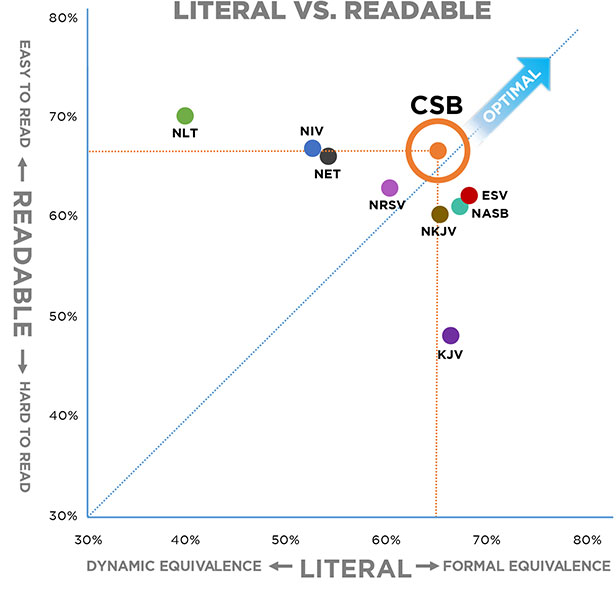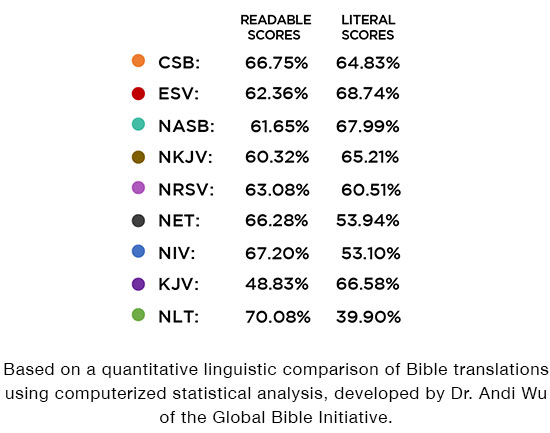
The CSB follows a translation philosophy called “optimal equivalence.” The term conveys a commitment to both “formal equivalence” (which recognizes the importance of the form of the original language text—that is, the words used and the grammatical and rhetorical structures) and “functional equivalence” (which recognizes the importance of conveying the original message and intent in natural English readily understood by modern readers).
While recognizing that no translation is perfect, we are committed to making every effort to accomplish both of the two essentials of translation:
(1) to leave no aspect of the original language text unaccounted for in translation, and
(2) to render the text using natural English that is as easily comprehended as possible (see Hab 2:2; 1 Cor 14:8–9).
The first goal is the most difficult, especially given our commitment to the second. Some formal features such as puns can usually not be captured in the translation itself but must be explained in translation notes (of which the CSB has more than most translations). Nevertheless, we have done our best to render the original biblical text in every detail as fully and as clearly as possible. This twofold commitment expresses our understanding of biblical accuracy, which is often mistakenly equated with literalness. A literal translation that is difficult to understand or even misleading to modern readers is not accurate.
On one hand, the CSB provides a highly accurate text for sermon preparation and serious study, translated from the biblical languages by scholars who love God’s Word. On the other hand, it doesn’t compromise readability and clarity for those who may be less familiar with the traditional (and sometimes difficult) vocabulary retained in some translations.
Research shows the CSB is both highly literal to the original languages and highly readable, achieving an optimal blend of the two.


The good news of the gospel and the truth of God’s Word are meant to be shared. A translation that is both highly literal and highly readable opens the door for every believer to share the Bible not only with those who have read it for a lifetime, but also with those reading the Bible for the first time. Learn more about the quantitative evaluation of the Christian Standard Bible
Some translations prioritize the form of the original text, while some prioritize its meaning in today’s language. The Christian Standard Bible resides in a mediating position on the continuum of Bible translations.